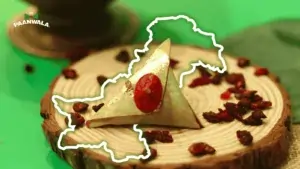
Paan, the betel leaf preparation, is more than a post-meal digestive in Pakistan; it’s a cultural cornerstone, a social lubricant, and a deeply personal indulgence. From Karachi’s bustling streets to Lahore’s historic lanes, the aroma of paan permeates the air, a testament to its enduring popularity, especially within the Muslim community.
This article explores the nuances of Pakistani paan, its historical roots, consumption habits, and the unique role it plays in the lives of its aficionados.
A Journey Through Time: The History of Paan
The betel leaf, the heart of paan, has a long and storied history, originating in Southeast Asia. Its cultivation and use spread across the Indian subcontinent centuries ago. Paan’s journey to what is now Pakistan is intertwined with the broader history of the region. It arrived with the Mughal Empire, becoming deeply ingrained in the courtly culture and subsequently permeating all levels of society.
The Mughals, known for their refined tastes and elaborate rituals, embraced paan, elevating it to an art form. This legacy continues to influence Pakistani paan culture today.
From Royal Courts to Street Corners: Paan in Pakistan
Following the partition of India in 1947, paan remained a vital part of the cultural heritage of Pakistan. The muhajir community, who migrated from India, played a significant role in shaping the paan landscape, particularly in cities like Karachi. They brought with them diverse paan-making traditions, enriching the existing culinary scene.
The paanwala, the skilled artisan who prepares and serves paan, became a fixture in Pakistani society, their shops serving as social hubs and cultural touchstones.
Karachi: A Cosmopolitan Paan Paradise
Karachi, a melting pot of cultures, reflects this diverse history in its paan offerings. Here, you find everything from traditional mitha (sweet) paan, reminiscent of Mughal traditions, to the more robust tambaku (tobacco) varieties. Karachiites, known for their fast-paced lifestyle, often grab a quick paan on the go, making it an essential part of their daily routine. The city’s numerous paan shops, often brightly lit and adorned with colorful displays of ingredients, serve as meeting points.
Lahore: The City of Gardens and Paan Connoisseurs
Lahore, with its rich Mughal heritage, has a more traditional approach to paan. While mitha paan is popular, tambaku paan holds a special place, especially among the older generation. Lahoris often savor their paan at leisure, enjoying it as a relaxing end to a meal or during social gatherings. The city’s paan shops, often tucked away in old bazaars, exude an old-world charm.
The Muslim Community and Paan: A Shared Tradition
Paan’s significance within the Muslim community in Pakistan is deeply rooted in tradition and hospitality. It’s offered as a gesture of welcome, symbolizing respect. During religious festivals, celebrations, weddings, and other social gatherings, paan is an integral part of the festivities. For many, paan is a cultural tradition passed down through generations, strengthening community bonds.
Why Paan Endures: A Taste of Tradition and Community
Several factors contribute to paan’s enduring popularity in Pakistan. Firstly, it’s a deeply ingrained habit, a ritual passed down through families. Secondly, it’s a social experience, shared among friends and family. Paan shops are not just places to buy paan; they are places to socialize, catch up on news, and strengthen community ties.
Thirdly, paan offers a unique sensory experience, a complex blend of flavors and textures that varies depending on the ingredients and preparation. Finally, despite the availability of modern alternatives, paan remains a connection to the past, a reminder of cultural heritage and tradition.
Pakistani Paan: A Unique Identity
Pakistani paan, with its diverse flavors and regional variations, has carved a unique identity. While influenced by other culinary traditions, it has developed its own distinct character, reflecting the country’s rich cultural tapestry. The paanwala, with his intimate knowledge of ingredients and customer preferences, plays a crucial role in preserving this culinary tradition, ensuring that the art of paan making continues to thrive for generations to come.
From its historical roots to its present-day popularity, paan remains an integral part of Pakistani culture, particularly within the Muslim community, a testament to its enduring appeal and cultural significance.